Chimney cleaning products: the best way to clean the chimney from soot
Careful operation of the furnace or boiler equipment is not a guarantee of the absence of soot in the chimney. The issue of cleaning the chimney remains relevant all the time. In order to facilitate maintenance, cleaning flues and chimney cleaners are used, the action of which is worth familiarizing with. Do you agree?
We will tell you about all the effective methods and chemical compositions that remove pollution of chimney pipes. In the article we have presented, information on methods for the prevention and destruction of tar deposits has been collected and presented. The folk and mechanical methods of controlling soot are described in detail.
The content of the article:
Causes and consequences of a dirty chimney
Combustion is a physicochemical process, as a result of which combustible substances are oxidized and a large amount of heat is emitted. Fuel breaks up into fractions - part is converted into gas and rushes up, creating traction. Particles of unburned materials (plaque and soot) are deposited in the chimney.
The amount of deposits depends on the completeness of fuel combustion. With active combustion, the organic content decreases sharply - water vapor, sulfur dioxide and carbon dioxide exit the pipe. Heavy tar and ash settle in a limited amount.
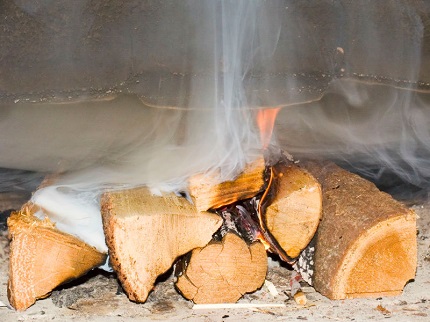
In addition to the natural combustion and decay processes, the main causes of chimney clogging include:
- The use of wood with a high content of resinous substances, for example, firewood from conifers. The resin forms an excellent adhesive base for soot adhesion.
- The firebox of a boiler or furnace with poorly dried or freshly cut firewood - condensation settles on the inner surface of the “smoke”. On wet walls, soot particles accumulate faster.
- Using a heating device for waste disposal. Combustible household waste is a complex of esters, tar components and non-combustible substances that contribute to the rapid pollution of the smokestack.
- Pipe insecurity cap - deflector. From the side of the street, leaves, birds, etc. can get into the chimney. During the time that the furnace is idle, wasps or birds sometimes arrange their nests in the pipeline.
The rapid "overgrowing" of soot is the result of dishonest work of the stove. Reduced pipe cross-sectional area, improper angle of inclination, roughness and many turns of the chimney accelerate the pollution process. Too thin walls or insufficient thermal insulation of the pipe contribute to excess condensate.
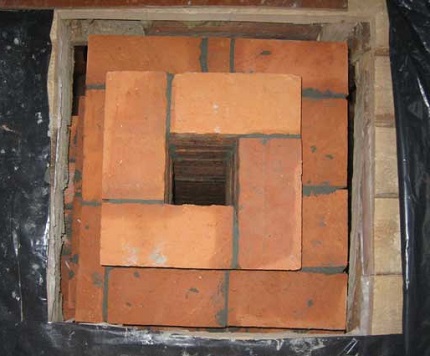
Possible consequences of a contaminated channel:
- Traction reduction. The narrowed clearance limits the free flow of smoke. Due to the accumulation of soot, the pipeline does not warm up well, which means that the efficiency of the equipment decreases. Not excluded tipping traction - Caustic smoke begins to flow from the furnace to the room, which is dangerous by carbon monoxide poisoning.
- Fire hazard. The carbon layer can ignite - in addition to deformation of the chimney, sparks and fire pose a threat to the roofing and the house as a whole.
There is a danger of fire and nearby buildings. The roofs of neighboring houses are not immune to the ingress of hot soot particles.
Symptoms and frequency of cleaning
The first symptoms indicating problems with the chimney appear long before serious problems.
However, one should be wary and take timely measures if:
- the color of the smoke changed from whitish, transparent to dark;
- the shade of the fire in the firebox turned dark orange, and the wood burns out almost silently, without cracking;
- To maintain the usual temperature, you have to throw more coal and firewood.
As the chimney “overgrows”, difficulties arise with the kindling of the fireplace and stove due to the lack of oxygen from the outside.
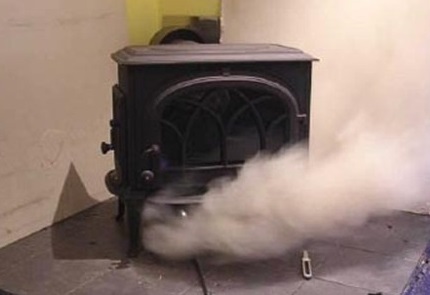
To avoid overhaul or partial disassembly of the duct should be regularly inspected and preventive maintenance of the chimney should be performed.
Recommended dates for examinations:
- mandatory inspection on the eve of commissioning or after repair;
- in anticipation of the heating period;
- inspection of gas boilers and furnaces of the first two years of service - twice a year, then - 1 time / year;
- calibration of ceramic, asbestos-cement and concrete pipes - 1 time / year;
- assessment of the condition of the brick chimney - 1 time / 3 months.
Regardless of the verification indicators, the stoves are advised to clean the fumes of heating and cooking appliances every 3 months, continuous boilers every 2 months.
Chemicals in the fight for cleanliness
With the regular use of industrial preparations, it will be possible to delay the thorough cleaning of the chimney. Reagents are added to the furnace and during combustion they emit components that convert the amorphous organic plaque into a solid fraction. Soot loses its adhesion to the walls and crumbles down. Subsequently, it is cleaned from the furnace.
Chemicals are available in the form of briquettes, powder or liquid. The characteristics of the most popular drugs and recommendations on how to better clean the chimney from soot are given below.
Series of products "Smoke" production "Ecolays"
The range of sewage treatment products of Smoke from Ecolays is presented in three types:
- box;
- log;
- granules.
Box "Smoke" - the cleaner is easy to use and gives a cumulative effect.
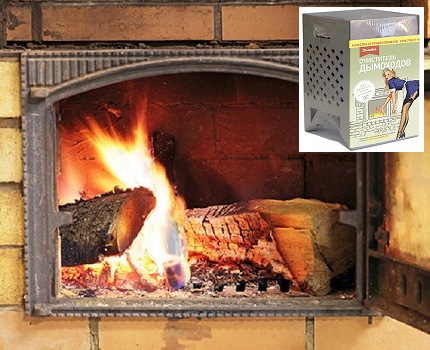
Activated carbon and metal salts, which are part of the box-type “Smoke”, react with tar coating when burning - moisture evaporates from soot, deposits become brittle and burn out.
Do not count on an instant result - the effect of the drug continues for another 2 weeks, a noticeable effect will come in 2-3 months.
The Smoke log is made in the form of a bar imitating a natural tree. It is laid together with firewood during kindling. During combustion, a beautiful turquoise flame is observed - a sign that the treatment components have entered into a thermal reaction. The advantage of using logs is aesthetics and an unusual visual effect.
Similar products: “Poleshko”, logs from “Vortex”, logs “Chimney sweep”.
The granular cleaner "Smoke" is designed for the maintenance of pellet stoves and boilers. The drug is mixed with fuel granules and poured into the furnace. Permissible use in traditional wood-burning stoves.
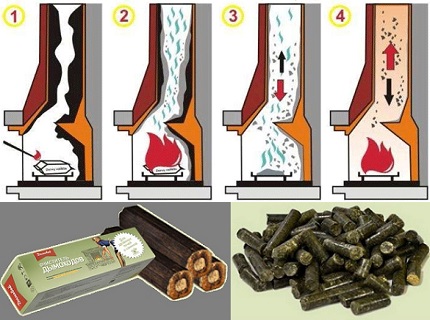
Smoke’s products have established themselves as a means of preventing and cleaning moderate pollution.
Kominicek - anti-burn chemical composition
The Czech-made preparation Kominicek is available in powder form, packaged in 14 g sachets.
Features of the use of treatment reagent:
- designed to remove soot, the layer of which is up to 2 mm;
- Recommended refueling dose - 1 packet / 1 kg of firewood;
- use with an open firebox (fireplaces) is unacceptable - when burning the chemical composition exudes a pungent odor.
The dosage of the cleaner for the furnace for preventive purposes depends on the type of furnace equipment:
- fireplace insert and local stove - 14 g;
- boiler serving one floor - 14 g;
- central heating boiler - 28 g.
The manufacturer does not recommend changing the dosage of the drug. In case of severe contamination, it is better to repeat the treatment twice a month. A bag of “Kominichek” is thrown into the furnace without opening, entirely.
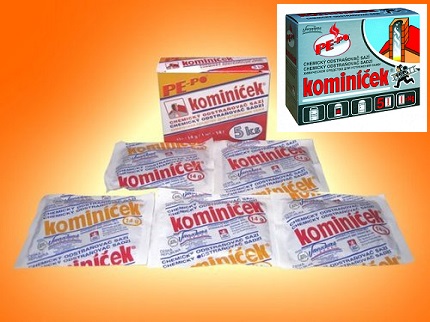
Hanza range of treatment products
The Lithuanian company has developed a line of effective reagents aimed at destroying creosote - resinous components that, when in contact with water vapor, create a sticky base for soot to stick.
Popular products from Hanza:
- "Log chimney sweep";
- concentrated granular preparation;
- sack cleaner in bags;
- pellets for maintenance of heating appliances operating on granular fuel.
The composition of Hanza-cleaners is a complex of crystals. One group of components acts as a catalyst, converting soot into combustible gases. Other substances produce haze at high temperatures - hot vapors destroy the structure of tar deposits.
Bulk soot remover Hanza - universal. The tool is suitable for fireplace inserts, solid fuel boilers, wood stoves and open fireplaces. The shelf life of the cleaner is unlimited.
The powdery reagent is easy to use - one or two measuring cups are added to the fuel in the combustion chamber. At the first stage of application, to ensure a good quality of cleaning with a cleaner, it is recommended to “refuel” each furnace.
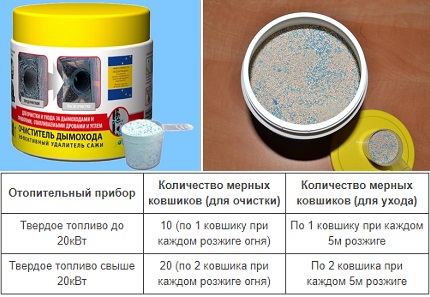
The powder is packaged in plastic containers or bags of 50 g. The volume of one package corresponds to the capacity of a measuring cup. "Log chimney sweep" burns out in 2 hours, validity period - 2 weeks. To increase the efficiency, it is advisable to repeat the preventive cleaning procedure. When laying in the furnace, the packaging does not need to be removed.
Granular “Hanza” provides cleaning not only the chimney of the pellet boiler, but also the burner, the glass of the door and the heat exchanger. The product is not suitable for equipment on wood and coal.
Recommended proportions based on the boiler output:
- up to 10 kW - 1 kg;
- 10-20 kW - 2 kg.
For the purpose of prevention, as 200 kg of fuel is consumed, 250 g of a cleaner are added.
Spalsadz - carbon black catalyst
Spalsadz (Poland) - activator for the complete burning of tarry deposits and soot. Reagent in the form of a green powder, consisting of inorganic salts. When the temperature rises to 350-600 ° C, the product decomposes into catalytic components that contribute to the decomposition of organics to water and carbon dioxide.
Features of the Spalsadz catalyst:
- non-explosive and non-flammable;
- does not react with ceramics, therefore, deformation of ceramic elements is excluded;
- increases the efficiency of heating appliances - fuel consumption is reduced by 20%;
- non toxic
- drug consumption - 1-2 kg / 1 ton of fuel (depending on the level of pollution).
The generated heat does not “escape into the pipe”, and the downtime for cleaning the boiler is reduced. An additional plus of Spalsadz is the reduction of sulfur dioxide emissions.
Traditional methods of cleaning the chimney
Traditional methods are aimed more at preventing the formation of tar deposits. If the chimney is clearly contaminated, they are ineffective, and some of them can cause a fire. Therefore, it is worthwhile to treat grandfather methods with a reasonable amount of skepticism and remark that the main condition for cleaning is safety.
Self-cleaning: what to add to the furnace
Below are suggested methods that are safe to implement. Their essence boils down to the use of substances, the combustion of which improves the separation of soot from the walls of the "fume".
Method 1 Salt. A thin layer of ordinary salt is poured on burning logs. Sodium chloride vapor “breaks” viscous deposits in the chimney.
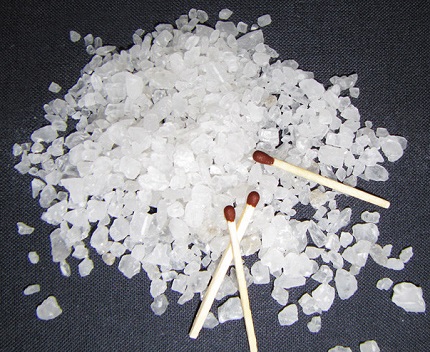
Method 2 Potato peel. Great and affordable tool. Potato peel must first be dried. Depending on the dimensions of the furnace, 0.5-1 bucket of peel is added to the furnace. Alternatively, you can use the potato itself, sliced and dried in the sun.

Method 3 Hot water. This option is suitable for primary cleaning and punching a heavily clogged chimney. 3-4 liters of boiling water are poured on top of the pipe, neatly distributed over the walls of the channel.

Method 4 Aluminum cans. An unusual, but quite effective option for cleaning the chimney. The essence of the method is to burn aluminum, and not just smoke and change color at high temperature. Optimally, if the can burns out in 5 minutes.

Burning soot with fire is a risky option
The old way to clean the chimney is to burn aspen wood. Logs are put into the oven and set on fire. It is necessary to achieve a large, but short-term heat, which will lead to the burning of soot.
When ignited, the stove starts to buzz, and fiery arrows can fly out of the pipe, the surrounding area is covered with white flakes. The result is a cleaned chimney.
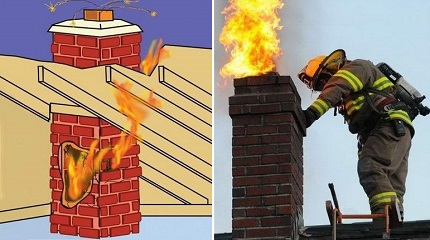
Despite the assurances of some stove-makers of the safety of burning soot, resorting to this method is highly not recommended. However, aspen can be successfully used as a preventive measure - it is enough from time to time to put 2-3 kg of alder or aspen logs into the oven at the end of the furnace.
We offer you to familiarize yourself with additional information about tools and methods. smoke duct cleaningoutlined in the recommended article.
Technology for mechanical soot removal
The most effective method to quickly bring the chimney back to normal is mechanical cleaning. The work is laborious and requires the contractor to comply with a number of rules.
Chimney sweep tools and ammunition
Chimney sweeps used many years ago are still relevant today.
Indicative list:
- A metal ruff with a diameter of 20-30% more than the cross section of the chimney. For square pipes, a stiff brush is selected.
- Cable and brush holders.
- Steel round core with a cable and a carbine. The diameter of the weight is 2/3 of the chimney section.
For cleaning, it is better to choose a brush with a nylon hard pile.
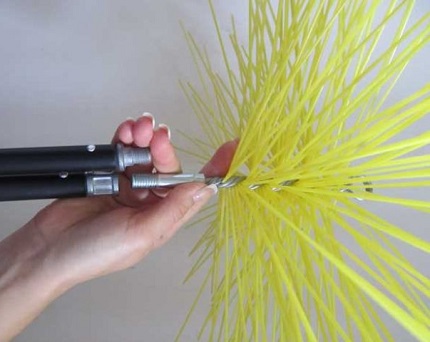
Before doing dirty work, you need to take care of personal protective equipment - wear long-sleeved clothing, glasses, a respirator and gloves, shoe boots with non-slip soles.
Work environment: safety basics
When cleaning, it is important to observe the following precautions:
- Flue gas inspection hatches must be closed so that the soot does not get inside the room and does not spoil the finish. Hang an open fireplace with a damp cloth.
- Work is carried out in calm, dry weather.
- The use of a safety cable and belt is mandatory.
- It is advisable to enlist the support of one responsible assistant.
- It is strictly forbidden to start cleaning while intoxicated, tired, or after taking medications that slow down the reaction.
In advance it is necessary to inspect the chimney for the presence of foreign objects, such as bird nests.

Step-by-step chimney sweeping process
The whole course of work consists of several steps:
- Remove the pipe head from the top of the chimney and remove visible dirt with a broom or long stick.
- Perform test run with weighting agent. The core should split large layers - small fragments will sprinkle into the firebox.
- When the channel passability is restored, pull out the cable and connect the brush to the core.
- Clean a small area by lowering and raising the rope.
- Similarly clean the rest of the chimney.
- Check the inspection chamber and remove fallen soot.
The described technology is effective for straight chimneys - even at an angle of 45 ° the passage of the core will be difficult.
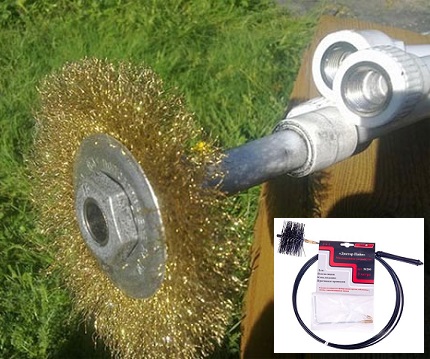
Conclusions and useful video on the topic
Comparison of the effectiveness of cleaning products (logs “Chimney sweep”, powders “Kominicek” and “Cheerful chimney sweep”):
Combustion of fuel with a powder cleaner:
How to make and use a simple device to remove soot from the chimney:
A full inspection and cleaning of the smoke ducts is best entrusted to a professional specialist. You can independently carry out preventive treatment with chemical reagents, following the recommendations of the manufacturer.
Do you have your own proprietary recipe for removing soot from the chimney? Have questions about obscure points in the article or want to talk about your own experience as a chimney sweep? Please write in the comment block everything that you would like to tell us and visitors to the site, post a photo here.

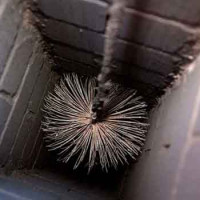 How to clean the chimney from soot: how to properly clean the chimney
How to clean the chimney from soot: how to properly clean the chimney 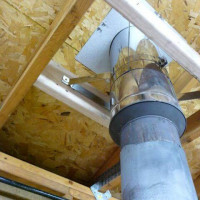 How to make the right chimney for a do-it-yourself stove: a step-by-step instruction
How to make the right chimney for a do-it-yourself stove: a step-by-step instruction 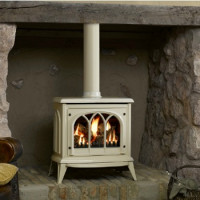 How to make a chimney for a fireplace: the rules of the device of the smoke channel and a comparison of designs
How to make a chimney for a fireplace: the rules of the device of the smoke channel and a comparison of designs  How is a ceramic chimney constructed: the specifics of installing a ceramic chimney
How is a ceramic chimney constructed: the specifics of installing a ceramic chimney 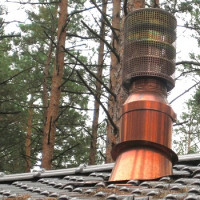 How to make a spark arrestor on a chimney with your own hands: a step-by-step guide
How to make a spark arrestor on a chimney with your own hands: a step-by-step guide 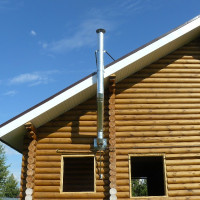 How to make a chimney in a private house with your own hands: design options and their implementation
How to make a chimney in a private house with your own hands: design options and their implementation  How much does it cost to connect gas to a private house: the price of organizing gas supply
How much does it cost to connect gas to a private house: the price of organizing gas supply  The best washing machines with dryer: model rating and customer tips
The best washing machines with dryer: model rating and customer tips  What is the color temperature of light and the nuances of choosing the temperature of the lamps to suit your needs
What is the color temperature of light and the nuances of choosing the temperature of the lamps to suit your needs  Replacement of a geyser in an apartment: replacement paperwork + basic norms and requirements
Replacement of a geyser in an apartment: replacement paperwork + basic norms and requirements
The more correctly designed the chimney, the less sweat with it then. This applies to methods and means of care. I usually do not buy industrial household chemicals, but clean them on my own, so to speak, in folk ways. I process it manually with a metal brush, a brush - this is the most reliable way, why come up with a wheel.I tried to burn aspen logs, did not like it at all, and it was dangerous.
Before each heating season, I hire a chimney sweep to clean the fireplace, since I myself do not understand anything about this, and safety first of all. From what I read, I can conclude that my specialist is doing everything right, and this is confirmed by the good work of the chimney in the fireplace. And I myself saw several cleaning methods described above. I advise you to clean the smoke channels regularly.
The chimney sweep “Log” is a good tool, an effective cleaner of the chimney of the boiler stove fireplace from soot soot and soot. The operation of the cleaner is based on the reaction, loosening the layer of soot. During the burning of the log, active oxygen and metal ions are released. Once in the chimney, they react with the components of the deposits, making them soft and supple.
Light fractions - soot dust and soot - are drawn out through a pipe through a draft. And heavy fractions - creosote and resinous components - settle on a grate with ash. As a result of cleaning, traction is strengthened, as a result of which heat transfer increases significantly. And you will get the right amount of heat into the room, using much less fuel.
Therefore, eliminating a chimney blockage prevents fires, increases the heating effect and saves gas, firewood or coal.
What is written in the advertisement is understandable, can you explain more simply what are the advantages of this log over ordinary aspen or potato peeling? Is there anything to pay money for?
The first advantage of production logs over the same potato peel is ease of use. You do not need to harvest and dry anything, you just buy a turnkey solution. And again, all these are preventive measures, that is, if there is a lot of soot and soot in the chimney, then you will have to clean the chimney manually. The same aspen in some regions can be difficult to get, in which case it is also more practical to use special logs or pellets. It looks like ordinary log, but it is saturated with special substances that help remove soot from the chimney.
It is also worth noting that a lot of soot does not form, it is not necessary to heat with tarry tree species, as well as wood that was used (for example, parquet boards).